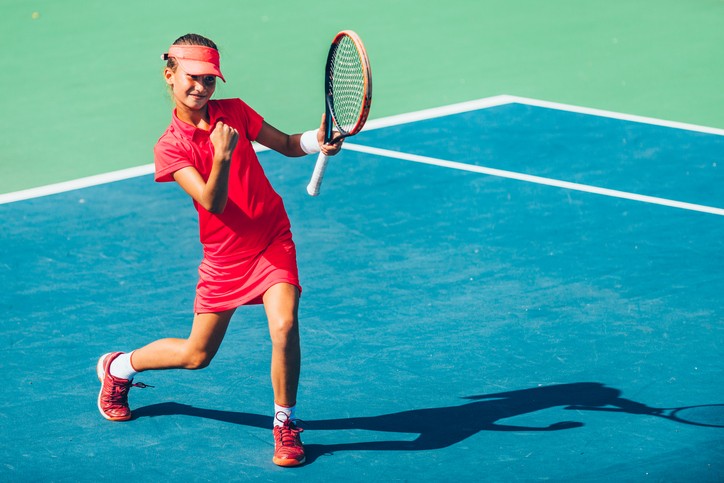It’s Time to PLAY!

I often hear the phrase “PLAY” used by coaches to begin a drill or scenario to emphasize the starting of a point. Play is a creative term used to elicit a behavior of imagination and randomness to help discover what experiences really mean. The word “PLAY” sounds fun, but I believe we can use it to deliver a message far more valuable.
P for Preparation
I love the phrase “Prepare or Repair” because, as players, we are either connecting with the ball with comfort or discomfort. Everyone has used the phrase “you’re late” a phrase nationally recognized by all coaches. As a solution, coaches must be observant to help their players prepare so they create time, maximize options and feel confident with their decisions. Two simple ways to help your players with preparation is by saying, “Get your racquet back before the incoming ball crosses the net” and “Keep your feet in constant motion.” These two simple reminders provide the biggest advantage from swing timing to movement. Seeing the difference will help you understand that preparation is prevention! Getting your players to fight for each second and each step will determine their day of tennis! The quality points is sure to improve everyone on court.
L for Learn
How often do we win or lose a point? Instantly and constantly, we are exposed to changing outcomes, which is why we need periodic and reflective learning! Whether you win or lose the point, coaches can help players understand why? Every action has a reaction, so winning or losing can be understood by thinking backwards after the outcome has told us the truth. Every coach can turn to technique, positioning, distraction and execution to further learn the patterns of “Why!”
I can guarantee that every coach has heard a player respond with, “I know, I know,” as if you are a broken record! But the truth is they really do not know all the details, just the last detail that showed up to determine the outcome. So what if we can help our players learn the missing details? They become self-aware problem-solvers who fill in the blanks so that coaches can either validate or add to their solution. “A chain is only as strong as its weakest link” … let’s neglect none and learn from the process.
A for Adaptability
Do all players who attend clinics, team practices and organized group classes play the same way? Of course not! There are always small delineations that create differences in player styles. So what is adaptability? To me, it is the perspective of not replacing the environment or personalities within it, but rather an egoless way to embrace unpredictable stresses to develop one’s calm and confident approach to handle all things. As coaches, we must teach our players how to be adaptable.
Here are two things to keep in mind that are sure to help your players: “Expect your best or worst shot to come back, regardless of who you play” and “ Your opponent is yourself, and your job is respecting the shot you receive.” Tennis players must be constantly adapting to days, times, styles, partners, opponents and environments, therefore teaching how to adapt is a crucial component of player development.
Y for You
It is 9:30 a.m. and it’s match time … where’s your head? Millions of thoughts compete for our attention at all times, the skill of focus in tennis is really the engine that runs your potential. I believe success or difficulties begin before stepping on the court. For example, a player must concentrate, be aware, disciplined and determined to compete for desired results. During drills and practices, coaches can shed light on these principles! “Get ready, get ready, get ready,” should be constantly repeated by coaches, so players can stay in concentration mode. Discipline can be addressed by coaches referencing shot selection patterns and high percentage thinking. I love to see hustle and effort, so encouraging your players is very important. Sayings such as “You got it!” “Go, go, go!” and “C’mon, you’re there!” will help your players develop determination levels and belief systems to dig deep when needed. If we can emphasize “You” more often, we can lead players to self-mastery and potential best practices.
The next time you are on the court, use the “PLAY” mentality and the meaning of each letter to elevate the quality of points, enrich the quality of emotional states and create a collaborative culture! The sport, its players and its purpose will be your movement of exceptionally understanding people. It’s show time … let’s PLAY!






